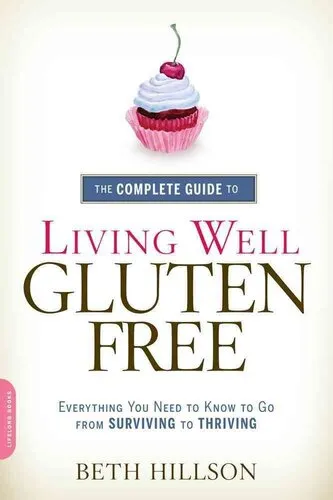The Journal of Rural Health
4.6
Reviews from our users

You Can Ask your questions from this book's AI after Login
Each download or ask from book AI costs 2 points. To earn more free points, please visit the Points Guide Page and complete some valuable actions.Related Refrences:
Analytical Summary
The Journal of Rural Healthpp.119—128 stands as a focused contribution to scholarly discourse on health service delivery, equity, and policy challenges in rural contexts. Authored by Bonnie B. Blanchfield, Sheila J. Franco, and Penny E. Mohr, this section encapsulates rigorous research examining the interplay between resource allocation, geographic isolation, and socioeconomic factors affecting rural communities. Its analytical core blends quantitative data with qualitative perspectives to yield a multifaceted understanding of rural healthcare systems.
The authors situate their study within the broader field of rural healthcare policy, using case analyses and statistical interpretation to map out disparities and opportunities in rural health delivery. Unlike generalized health service research, this work zeroes in on rural-specific variables—distance to care facilities, provider shortages, and infrastructural constraints—that define the realities of rural populations. This specificity makes the text particularly valuable for policymakers, practitioners, and academics seeking to integrate tailored solutions into the national health conversation.
Information about the original publication year is unavailable due to no reliable public source detailing the full bibliographic record. However, the journal's commitment to evidence-based reporting affirms the ongoing relevance of the research. By balancing complex data tables with accessible narrative insights, the authors have provided a text that bridges the gap between technical expertise and actionable knowledge.
Key Takeaways
This book section offers a distilled selection of compelling findings and thematic insights designed to inform rural health stakeholders and to advance both academic understanding and applied strategies.
First, rural healthcare policy must adapt to the unique demographic distributions and infrastructural limitations rural areas face, avoiding one-size-fits-all solutions characteristic of urban-centric models.
Second, health services research reveals systemic inequities that can be addressed through targeted funding, workforce development programs, and telehealth expansion, maximizing access without compromising quality.
Third, community engagement is vital; without integrating local voices into policy creation, even the most theoretically sound interventions risk limited uptake.
Fourth, interdisciplinary collaboration between public health officials, academic researchers, and policymakers is essential for sustainable change in rural healthcare systems.
Finally, continuous monitoring and evaluation anchored in both quantitative metrics and qualitative feedback sustain improvement and responsiveness in policy deployment.
Memorable Quotes
“Addressing rural health disparities requires more than data—it demands sustained, contextual engagement with communities.”Unknown
“Policy without place-based understanding is policy without impact.”Unknown
“The future of rural healthcare lies not in replication of urban models, but in creation of systems that reflect rural realities.”Unknown
Why This Book Matters
The Journal of Rural Healthpp.119—128 holds significance for its precise focus on the intersection between evidence-based research and real-world policy application in rural settings.
It not only contributes to scholarly knowledge but also offers a roadmap for action. The authors’ backgrounds in health services research and rural healthcare make their perspectives both credible and practical. For academics, this section serves as a model of how complex issues can be distilled for effective dialogue; for practitioners, it provides a knowledge base directly applicable to rural policy initiatives.
Critically, this work encourages ongoing discourse around rural health disparities and ensures that future interventions remain grounded in the lived experience of rural populations. This dual focus strengthens the bridge between theory and practice, cementing the text’s place as a valuable reference point in the field.
Inspiring Conclusion
In revisiting The Journal of Rural Healthpp.119—128, readers are reminded of the ongoing urgency to address rural health disparities with precision, empathy, and innovation.
This section invites scholars, policymakers, and healthcare practitioners to not only absorb the findings but to actively participate in transformative dialogue. The nuanced exploration of rural healthcare policy and health services research serves as both a foundation and a catalyst, encouraging collaborative initiatives that genuinely reflect rural realities. As such, the next step is clear: read, share, and discuss the insights to shape better rural health systems.
Free Direct Download
You Can Download this book after Login
Accessing books through legal platforms and public libraries not only supports the rights of authors and publishers but also contributes to the sustainability of reading culture. Before downloading, please take a moment to consider these options.
Find this book on other platforms:
WorldCat helps you find books in libraries worldwide.
See ratings, reviews, and discussions on Goodreads.
Find and buy rare or used books on AbeBooks.
1224
بازدید4.6
امتیاز0
نظر98%
رضایتReviews:
4.6
Based on 0 users review
Questions & Answers
Ask questions about this book or help others by answering
No questions yet. Be the first to ask!






